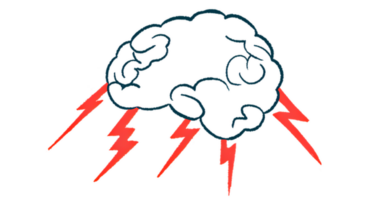Sharing Our Stories Reveals That We Are Not Alone

When my wife and I chat with people about having Parkinson’s disease, we often hear comments like, “My brother has Parkinson’s.” Or, “My uncle had Parkinson’s.” Or, “Both of my grandfathers have Parkinson’s.”
These stories are shared by medical providers, acquaintances, and co-workers. These are people outside the usual Parkinson’s support groups of friends, neighbors, and members of the community who have been forthcoming about their own experiences with Parkinson’s disease. It seems to us that these conversations are happening more often.
Recent studies indicate that the number of patients receiving a PD diagnosis is growing. A 2018 study identified 680,000 PD patients 45 or older as of 2010, thereby eliminating the distinction of the early-onset patient as rarer in the U.S. The authors projected an increase to 930,000 by 2020, and to 1.2 million by 2030.
This study reviewed the prevalence of Parkinson’s disease in North America by looking at populations in the U.S. and Canada. The researchers found additional evidence for ethnic, socioeconomic, and geographic variation in PD prevalence, and by their admission, likely underestimate the true prevalence.
While this article did not specifically identify potential causes, it did highlight the increasing burden for care, treatment, and caregiver responsibility with a strain on health and elder care services as the number of PD patients grows.
An Op-Ed column published this month in The Guardian quoted Dr. Ray Dorsey, a neurologist at the University of Rochester Medical Center in New York, as saying, “We’re on the tip of a very, very large iceberg.” He refers to the “Parkinson’s epidemic” as the fastest-growing neurological disorder in the world.
Many cases of PD are labeled as idiopathic, indicating that the cause is unknown. To offer some hope to PD patients, there is research to improve early diagnosis with the identification of prodromal symptoms. There are early symptoms that precede the full-blown tremors and severe motor dysfunction associated with later-stage PD.
Researchers are also studying disease development, noting that studies of midlife Parkinson’s are largely neglected. Understanding these early symptoms may identify ways to reduce the severity of progression and create a better quality of life. Each of us can help improve our understanding of PD by sharing our story.
Often, my wife and I begin sharing our PD story by answering someone who asks, “What do you do?”
We explain why we write these columns. The story becomes more detailed when explaining why some days are better than others, and by attaching the caution that because I have PD, I cannot always adhere to social commitments.
It is natural to assume that if we say we are going to attend a meeting or a social event, one can expect us to be there. But that might not happen. We might cancel at the last minute. Sometimes, I just can’t physically get up and show up. That is part of our PD story.
Not everybody understands this. It’s not because we casually decided to arbitrarily renege on the meeting to do something else. Living with PD brings with it misunderstandings. These misunderstandings happen less often when we share our PD story with those who have seen PD and have lived with it.
Before my diagnosis in 2014, Parkinson’s disease wasn’t on my radar. Even though I had provided clinical rehabilitation programs for patients with brain injuries, many of these cases were the result of traumatic brain injury or stroke. Parkinson’s didn’t present in any of my clinical encounters.
That changed in 2014. Being diagnosed with PD put me in a state of shock. Suddenly, I felt alone and frightened.
From my studies, I knew that support groups help people and their families dealing with chronic illness. Several years after being diagnosed, we started attending Parkinson’s support groups and were pleasantly surprised to see dozens of enthusiastic participants. This number increased at a presentation I gave on my PD research and writing.
I look forward to attending the PD support groups again. Sharing my PD story, and hearing others’ stories, confirms that I am not alone.
With so many more people living with PD, your next casual conversation may reveal someone who knows someone with Parkinson’s. If I could go back to my first year with the diagnosis, I would tell myself not to wait to join a support group.
In sharing our story, we continue to learn more about what is possible. We are discovering that it’s not all gloom and doom, and a better quality of life can be attained. Face-to-face sharing touches the heart and heals. We are not alone.
***
Note: Parkinson’s News Today is strictly a news and information website about the disease. It does not provide medical advice, diagnosis or treatment. This content is not intended to be a substitute for professional medical advice, diagnosis, or treatment. Always seek the advice of your physician or another qualified health provider with any questions you may have regarding a medical condition. Never disregard professional medical advice or delay in seeking it because of something you have read on this website. The opinions expressed in this column are not those of Parkinson’s News Today or its parent company, Bionews, and are intended to spark discussion about issues pertaining to Parkinson’s disease.







Leave a comment
Fill in the required fields to post. Your email address will not be published.